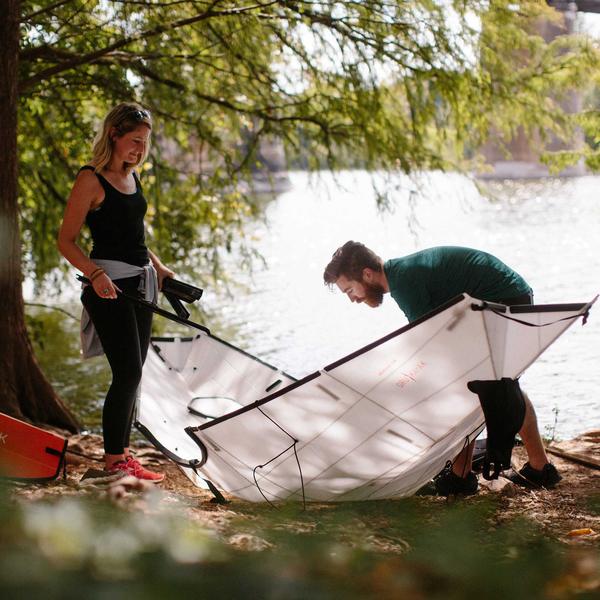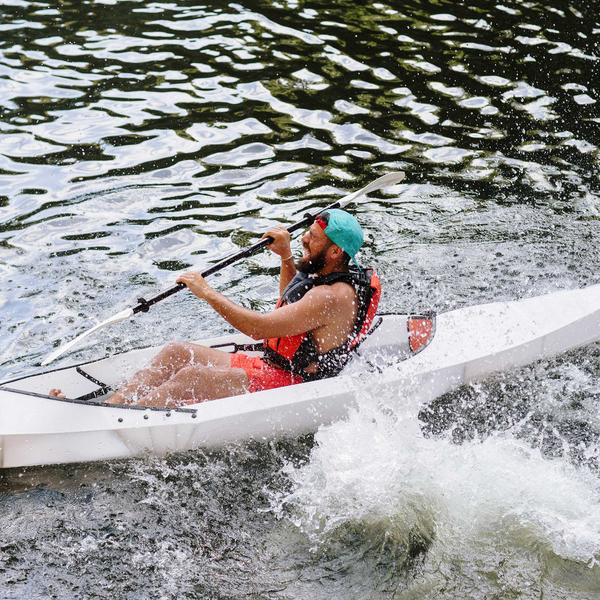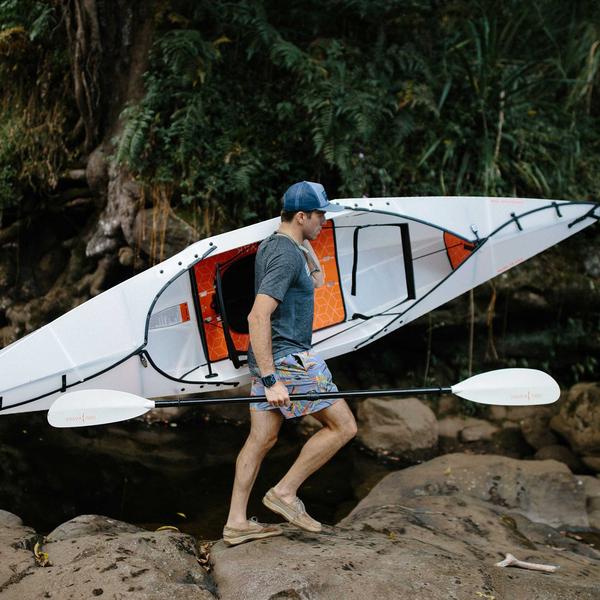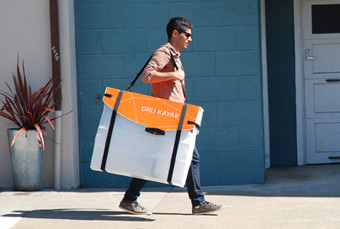The Oru Kayaks are some of the best portable and folding kayaks on the market but with so many models to choose from, it can be challenging to decide which one is right for you. Worry not, over the last 8 years, I’ve paddled in all the Oru models and was excited for the launch of each one when it came out.
In this article, I’ll compare two popular models, the Oru Bay ST and the Coast XT and hopefully help you decide which one would be the best fit for your needs.
Oru Bay ST vs Coast XT: 4 Main Things to Consider

Before you can decide which of these models is better suited for you, I will go over four main points to help you decide. I’ve paddled in both of these for around 8 years and have used them with friends as well. Here we go:
#1. Design and Build Quality
The Oru Bay ST and Coast XT share the same fundamental design: they are both foldable kayaks that can be easily transported when not in use.
However, the Coast XT is longer, wider, and heavier than the Bay ST, meaning it can support more gear and passengers than the Bay ST.
The build quality is impressive, with both models made of 5-millimeter double-layered polypropylene, making them durable, robust, and buoyant.
But if you plan on kayaking in tough, unpredictable conditions, the Coast XT would be a better choice due to its improved stability and higher freeboard.
The Bay ST is designed to be paddled in calm and friendly waters (like in bays!), making it a great choice for recreational paddlers versus the Coast XT which is designed to be paddled in rougher conditions, like open waters (hence the name “coast”).
You definitely need to consider what type of water you will be taking your kayak in as one of the major decisions in helping you decide which model to purchase.
#2. Speed and Maneuverability

Although both the Oru Bay ST and Coast XT offer great speed and maneuverability, there are some key differences worth noting.
The Bay ST is more maneuverable due to its shorter length and shorter bow and stern.
On the other hand, the Coast XT can cut through the water faster and with less effort, thanks to its longer and more slender hull. Kayaks that are designed long with slender hulls navigate faster in water.
Does speed matter to you? If so, then the Coast XT is your baby. If you’ll be taking it out for fun and leisure reasons, then the Bay ST should do well.
#3. Comfort and Convenience
Having a comfortable and convenient kayak is crucial especially if you plan on spending a full day on the water.
You’ll be super happy to know that both of these models offer a similar level of comfort with adjustable seats, footrests, and backrests.
However, the Coast XT takes it a step further with its additional thigh pads and the option to add up to three additional foam seat cushions for extra comfort. How about that for comfort?!
When it comes to convenience both models take about 10-12 minutes to assemble although the Coast XT is slightly more cumbersome to pack and unpack due to being longer.
#4. Price and Value
Finally, we come to the pricing and value of the Oru Bay ST and Coast XT.
As you might expect, the Coast XT is the more expensive option with a price tag of around $2,100 (depending on which bundle you choose) while the Bay ST costs around $1.775 (and goes higher depending on the model, again).
But, as mentioned previously, the Coast XT offers more space, stability, and speed than the Bay ST, so it is worth the investment if you plan on kayaking frequently and in more temperamental conditions. In comparison, if you’re a recreational kayaker looking for a reliable and affordable option, the Bay ST would be an ideal choice.
Can You Go Fishing in the Bay ST?
Yes, you can go fishing in the Oru Bay ST! It’s a great choice for recreational kayak anglers or those just getting into the sport.
Are Both of These Models by Oru Equally Durable?
Yes! Both the Oru Bay ST and Coast XT are equally durable as they both use a double-layered polypropylene build with reinforced seams that make them capable of handling tough conditions.
Which One Should You Go For: Oru Bay ST or Coast XT?
Whether you decide to go with the Oru Bay ST or the Coast XT depends on your needs and budget.
If maneuverability and ease of transport are your top priorities, go for the Bay ST. If you’re looking for more speed, storage, and stability for rough waters, the Coast XT is the way to go.
I do think that the Bay ST is easier to maneuver but it’s not designed for open waters like the Coast XT. For that reason, I prefer my Bay ST more than the Coast XT but the XT cuts through open waters like a knife.
Whichever one you go for, make sure to factor in where you’ll be kayaking as that’ll play a major factor here.








